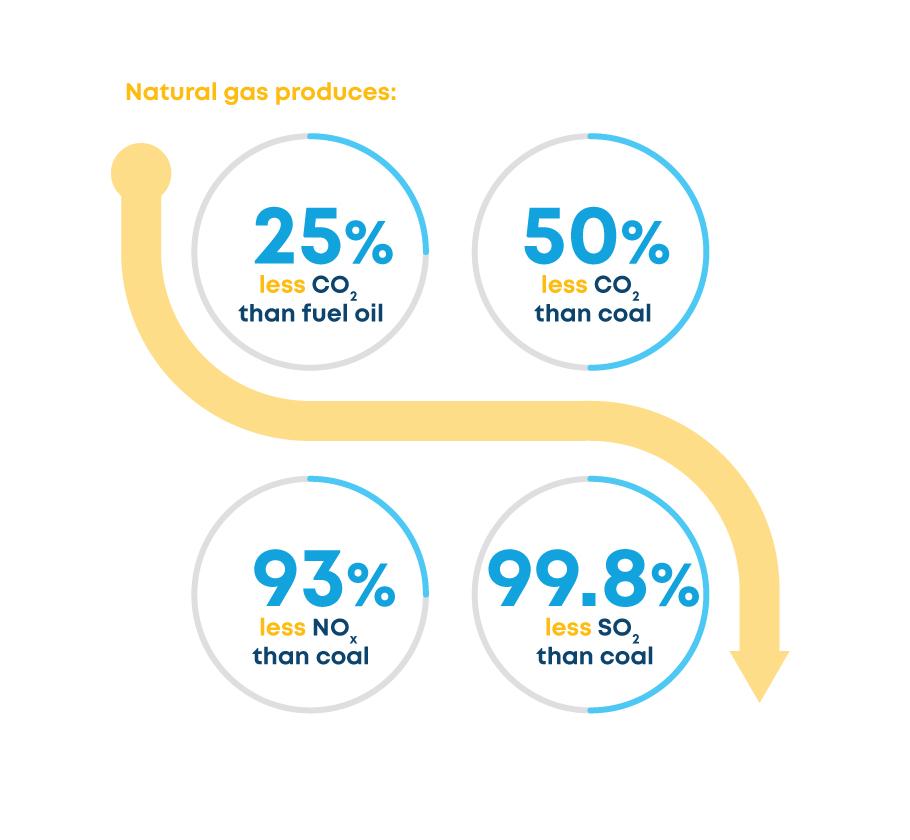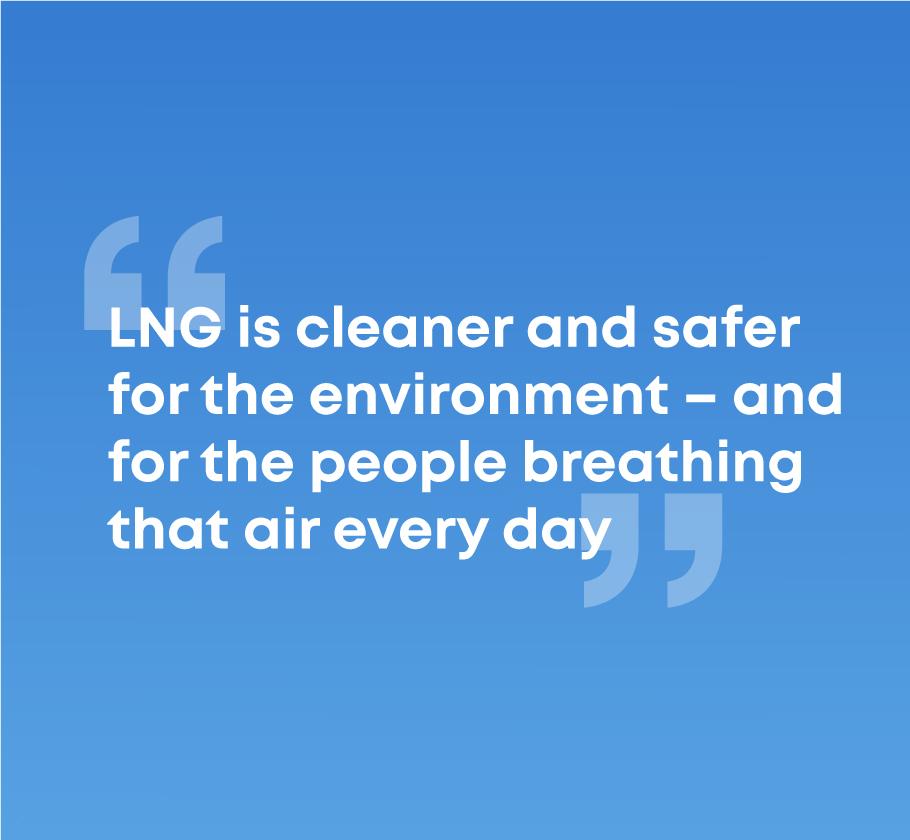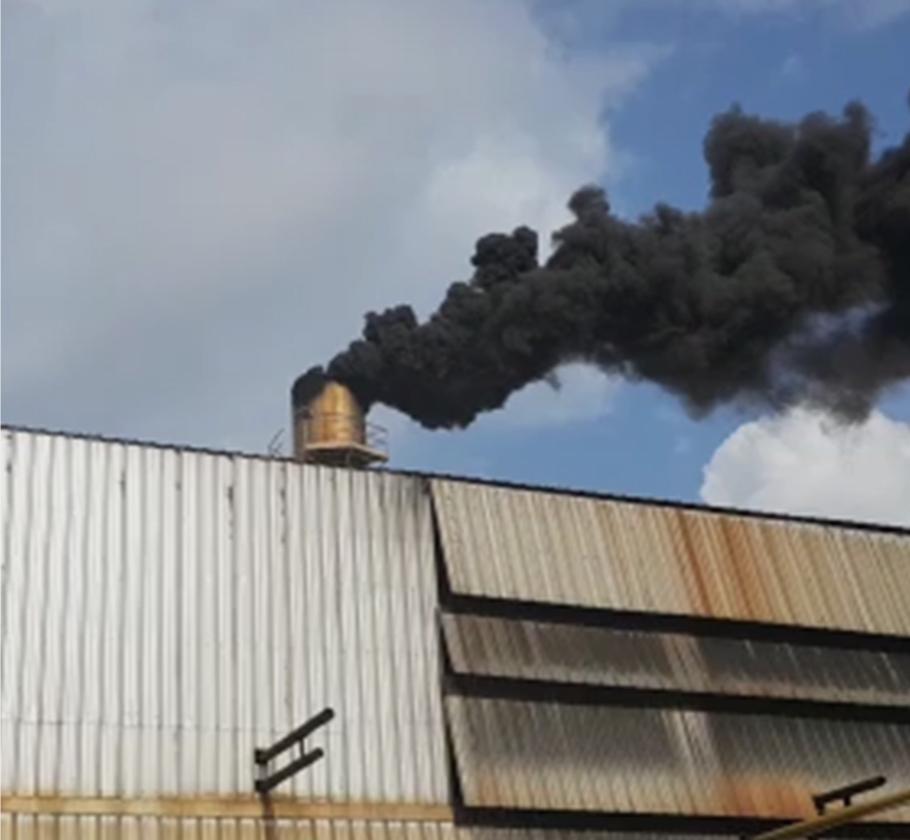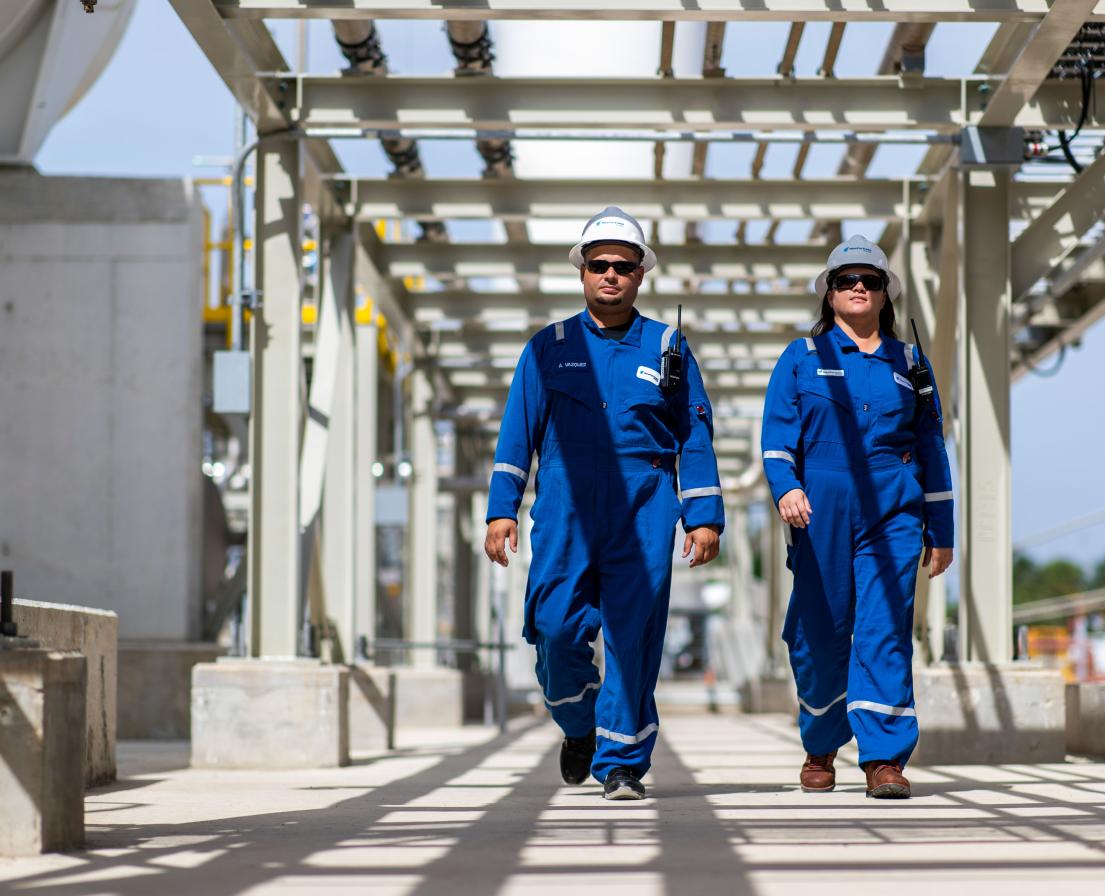A difference you can see:
before and after liquefied natural gas (LNG)
LNG CASE STUDY
See it to
believe it - liquefied natural gas (LNG) case study
By converting from heavy fuel oil (HFO) to liquefied natural gas (LNG), this plant traded its billowing waves of dirty black smoke for a peaceful, picturesque, and unobstructed view of the sky. It’s a graphic illustration of how switching to liquefied natural gas (LNG) is cleaner and safer for the environment – and for the people breathing that air every day.
Before and after liquefied natural gas (LNG)
Take a look at the environmental impact this
customer had by converting to liquefied natural gas (LNG).*

Make a Cleaner Break
How does liquefied natural gas (LNG) work? Compared to traditional fuels such as oil or coal, using liquefied natural gas (LNG) for energy contributes far less to our world – less nitrogen oxide (NOx), less carbon dioxide (CO2), nearly no sulfur oxide (SOx) or fine particulate matter– really, fewer air-polluting emissions of just about every kind. In fact, according to the U.S. Energy Information Administration, natural gas produces approximately 25 percent less CO2 compared to distillate fuel oil and almost 50 percent less CO2 compared to coal.(1) Further, natural gas emits 93% less NOx and 99.8% less SO2 than coal.(2) Those are add-ons we can live without.

Take the Safer Bet
Check out the before-and-after pictures again and imagine taking a deep gulp of the dark haze spewing out of the building in the image on the left. The urge to gag is almost instinctive. But the hazards of that air, particularly for plant workers and the nearby communities, are much more pervasive than a nagging cough. In addition to an overall reduction in quality of life, the pollutants in those emissions are associated with a variety of human health concerns, including asthma, bronchitis, cancer of the lungs, and heart disease, and the related consequences of hospitalization and premature death.(3)
Seeing is Believing
What is liquefied natural gas (LNG)? Liquefied natural gas (LNG) is odorless, colorless, non-corrosive, non-combustible, and non-toxic. It’s significantly better for the environment and for our personal health – a difference you can actually see. Moreover, as a proven complement to renewable power options, liquefied natural gas (LNG) is helping make our sustainably sourced energy future increasingly visible.


